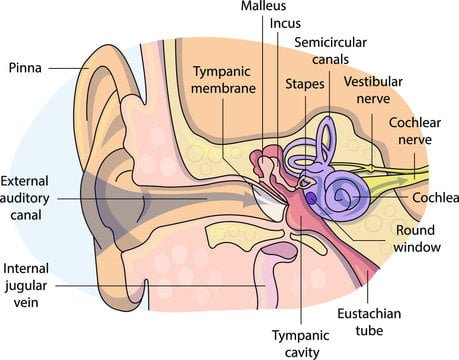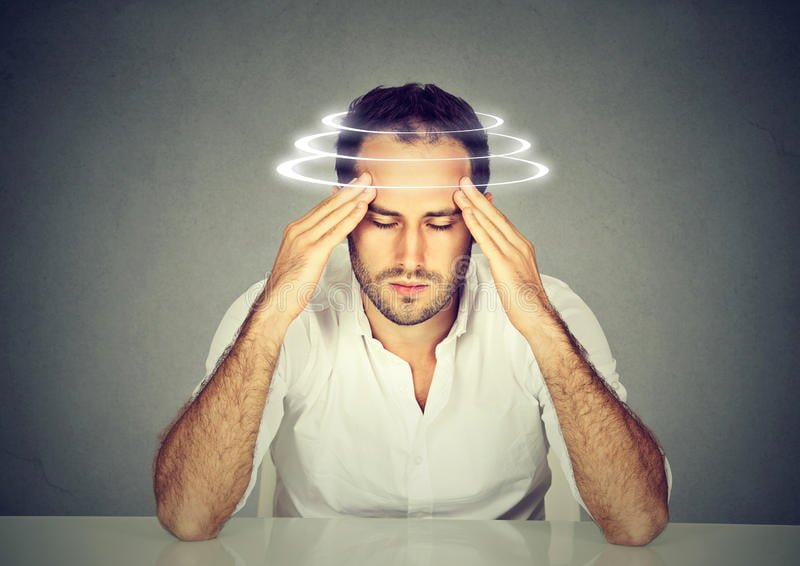
First of All – What Causes Dizziness?
When you think of dizziness, what causes spring to mind? Getting up too fast? Banging your head? Dehydration? Well, the truth is that all of these can cause dizziness, but extended dizziness is sometimes a more serious issue. It often has a deeper root cause and needs to be treated instead of ignoring it and assuming it will go away on its own. Vertigo is one example of extended dizziness and is described as feeling off balance or having regular dizzy spells. Good news is that there is a treatment available for these conditions, it’s called vestibular rehabilitation therapy. And this is something we offer in our Vancouver clinic.
Extended dizziness and vertigo can negatively impact your everyday life and hinder your ability to complete your daily routine. The secondary effects of dizziness can almost be as bad as the primary symptom and include nausea, vomiting, migraines and anxiety. This is reason enough to seek treatment!
You and Your Vestibular System
These disorientating spells are caused by a disruption in the vestibular system. Now this might sound like a fancy medical term too complicated to understand. In layman’s terms, it is the sensory system located in your ear that detects head movement and orientation, which in turn transfers respective information about your movement, position, and environment to your brain. The vestibular system helps us to be aware of our head movements and any change in gravity (for example, standing up from lying down or vice versa) which helps us to keep our balance.
Vestibular disorders may arise when there is an impact to the head or inner ear. This can happen during motor vehicle accidents, from sports-related injuries, or other traumas to the head. When this happens, false information is sent to the brain about the head’s movement and position. This causes the dizzy, disoriented feeling. It can also cause havoc with one’s balance as well as nausea since the vestibular system has been disrupted and the brain cannot make sense of the sudden changes in gravity and head positioning. Other causes of vestibular disorder are migraines, inner ear infections, diabetes, low vitamin B12 levels, medication, dehydration and osteoporosis.


What treatment can help me with my dizziness?
The great news is that you don’t have to suffer a life of dizziness! Physiotherapy-led Vestibular Rehabilitation Therapy (VRT) can help. VRT is an exercise-based therapy to help tackle the symptoms of vertigo and dizziness. As each case of dizziness is different, and can be the result of a range of factors, each VRT session is individually tailored to suit a patient’s current symptoms and progress. VRT focuses on 4 exercise treatments: Habituation, Gaze Stabilization, Balance Training, and Otolith Repositioning.
Habituation
Habituation benefits those who feel increased dizziness when moving around, especially from quick head movements. It is also a beneficial exercise treatment for those who find they have increased dizziness in visually ‘busy’ situations. These may include: walking on patterned surfaces, watching visually-stimulating action movies, or busy shopping malls for example. Habituation exercises work through repeated, but controlled, exposure to the stimuli or movements that usually provoke or aggravate the patient’s dizziness. This might sound counter-intuitive since you’re trying to avoid situations that make you dizzy, right?
However, with habituation, it’s important to control the environmental factors of a ‘busy’ situation that can bring on dizziness as well as learn important exercises and movements to address these situations as they arise. Even though you are mildly provoking these symptoms, they should be temporary. The aim is to train your brain to ignore the abnormal signals it receives from the inner ear. This, in turn, decreases one’s dizzy symptoms as the brain begins to interpret them differently.


Gaze Stabilization
Gaze stabilization involves stabilizing the gaze during head movements to decrease dizziness from blurred vision or visuals ‘bouncing around’ when one’s trying to focus on something. An example of an exercise used in Gaze Stabilization involves the patient moving their head using different movements, up and down/side to side, whilst focusing or fixating on a static object. This forces the eyes to focus on a controlled environment and can decrease dizziness caused by blurriness.
Other exercises also help the brain to re-focus and re-interpret one’s visual surroundings without bringing on feelings of disorientation.
Balance Training
Balance Training centres on the ability to prevent falls and those whose dizziness affects their balance. It is also beneficial for those whose dizziness affects their ability to walk on uneven ground or in the dark. Balance training exercises focus on standing, bending, reaching, turning, walking and even running, with the aim being to return patients to their regular level of balance and movement. The exercises start ‘easy’ and become increasingly ‘harder’ to ensure the body’s balance is increasingly challenged but at safe and supervised level.


Otolith Repositioning
Don’t be thrown off by the funny name of this one. Think of otoliths as tiny little crystals in your inner ear that help to identify movements and position changes. Otoliths are responsible for sending messages to your brain informing it on how to react in any given situation. When these crystals are disrupted, it causes dizziness and light-headedness. During otolith repositioning, a trained physiotherapist will demonstrate and guide you through a range of specific head and neck movements and exercises, alongside some torso movements to realign the otoliths in your inner ears. This should have the immediate impact of reducing your dizziness and help clear up any light-headedness.
How Can I Get Help at Backs in Action?
Reza Nematollahi is a certified Vestibular Rehabilitation Therapist at Backs in Action.
A typical session of VRT includes an assessment and evaluation of the causes of your dizziness, along with a treatment plan and supervised exercises to get you back on the road to recovery. Each session is tailored to an individual’s situation and will change according to the progress being made each session. When you’re ready, one of our trained Vestibular Rehabilitation Therapists will also provide you with the exercises and techniques to use at home to ensure you can continue treatment unsupervised. To find out more information, you can call Backs in Action at 604-876-9976, email us, or book an appointment directly online.


